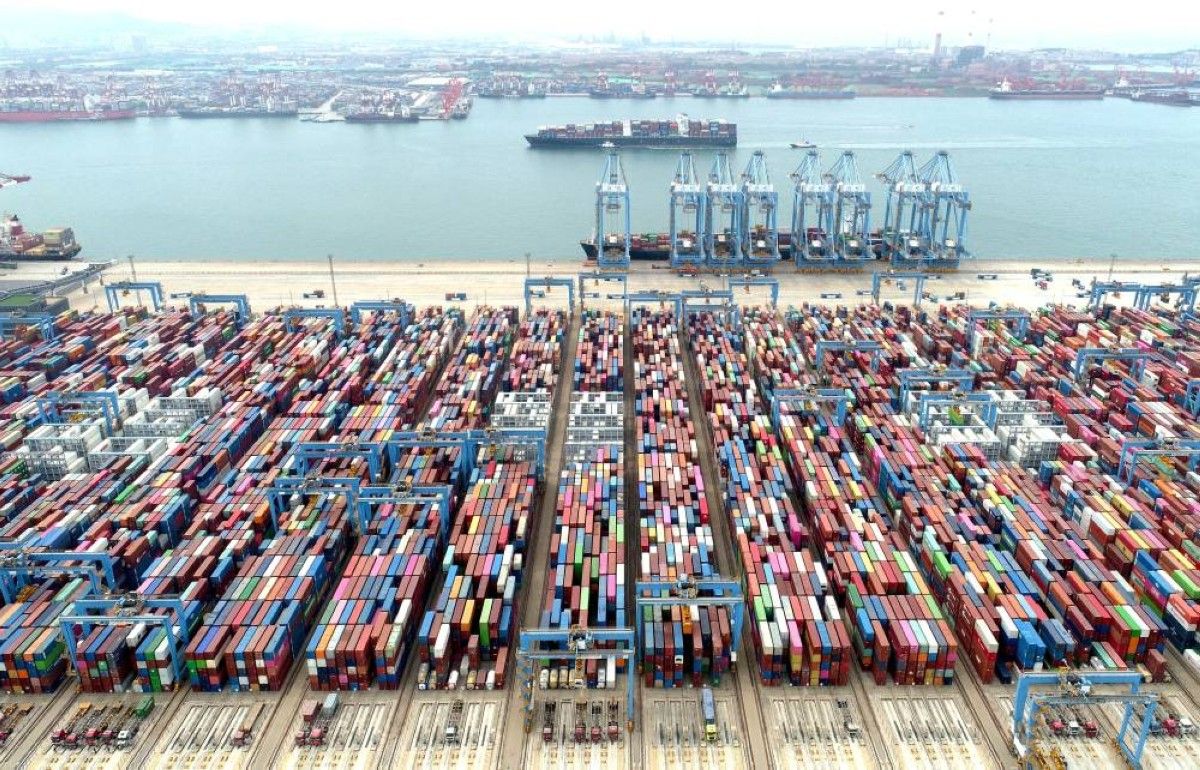China Records Growth in Exports and Imports Supported by Global Demand Improvement and US Tariff Truce

Chinese customs data showed a 5.8% growth in exports in June compared to last year, exceeding analysts' expectations of a 5% increase, according to a survey by Reuters.
This performance was supported by an increase in shipments to non-US markets, in addition to the temporary truce in US tariffs that helped slow down the decline in exports to the United States.
On the other hand, Chinese imports recorded a slight increase of 1.1%, the first rise since the beginning of the year, although it was lower than analysts' expectations of 1.3%. This improvement is seen as a partial indicator of domestic demand recovery after months of decline.
China's exports to the United States fell for the third consecutive month by 16.1%, but the rate of decline decreased compared to May, which saw a 34% drop. Chinese imports from America also decreased by 15.5%, compared to a previous decrease of 18%.
According to CNBC analysis based on official data, China's exports to Southeast Asia jumped by 16.8%, while its shipments to the European Union increased by 7.6%. In contrast, imports from these regions saw slight growth rates of 0.08% and 0.41% respectively.
During the first six months of this year, China's overall exports increased by 5.9%, while imports decreased by 3.9%, resulting in a trade surplus of $585.96 billion, a 35% increase compared to the same period last year.
Despite the strong performance, economic experts warned that export growth may face pressures due to continued uncertainty about US tariffs. Zhiqun Huang, an expert at Capital Economics, said in a research note: "Tariffs are likely to remain high, with increasing restrictions on Chinese manufacturers' ability to expand their global market share by reducing prices."
He added that import recovery may be a result of a lower comparison base, while the tariff truce helped stimulate demand for American goods, reducing the decline in imports from America.
Relations between the two countries have improved after meetings in London last month, where the parties agreed on a framework to implement previous agreements. Beijing agreed to resume shipments of rare earth metals, while Washington offered to ease restrictions on ethane and chip design software exports.
In June, China's exports of rare earth metals jumped by 60.3% annually to 7,742 tons, a 32% increase from May, demonstrating China's commitment to agreements before the August 12 deadline for a permanent deal.
Despite US and European restrictions, Chinese steel exports rose by 10% to 9.7 million tons, while exports of integrated circuits, cars, and ships increased by 25.5%, 27.4%, and 11.9% respectively. Soybean imports increased by 10.4%, and crude oil by 7.4%.
China is expected to announce economic growth data for the second quarter tomorrow, Tuesday, with Reuters analysts expecting a growth rate of 5.1%, compared to 5.4% in the first quarter.
However, Chiway Zhang, chief economist at Binpoint Asset Management, warned that "export momentum may weaken later, necessitating new financial stimulus to address the impact of US tariffs."
It is worth noting that the trade truce between Washington and Beijing, extended in May, has prevented an escalation of the trade war, but tensions persist due to US accusations of China "failing to fulfill its commitments."